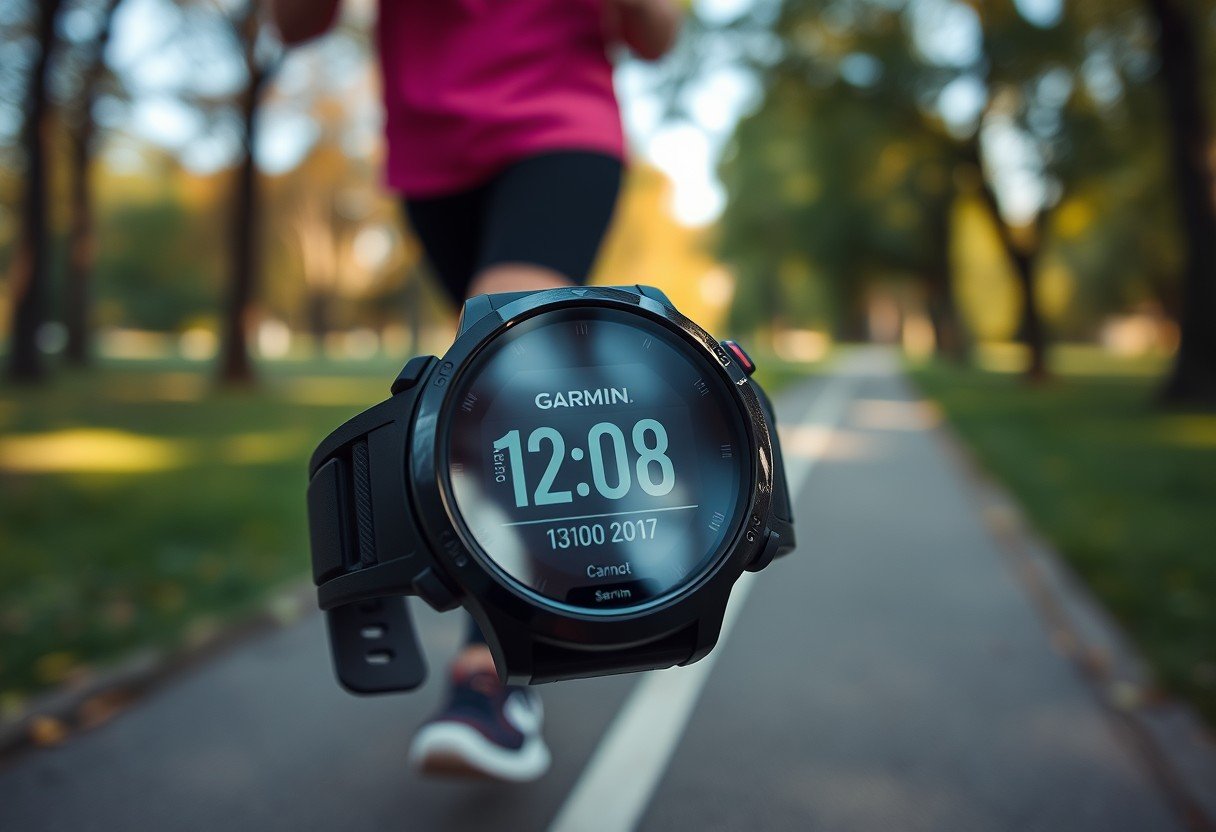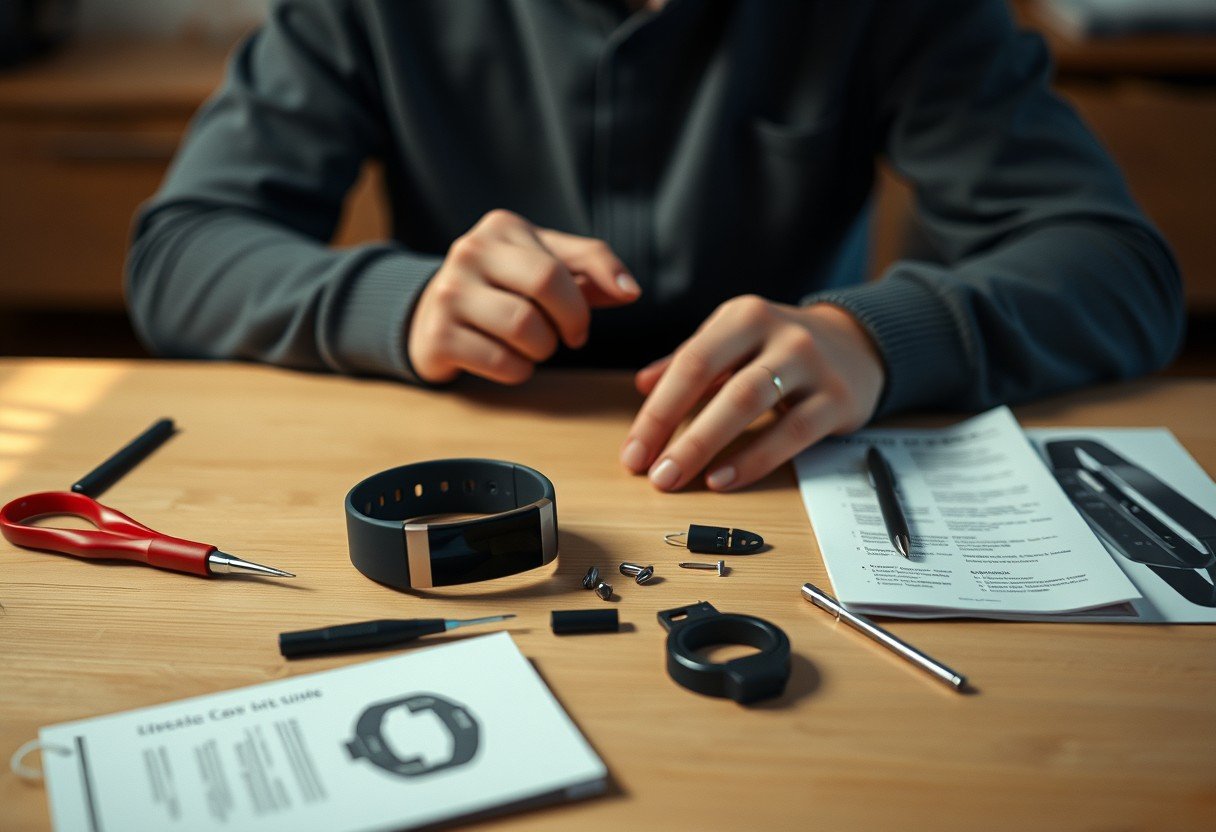Garmin watches are popular for tracking fitness, but how well do they actually count your steps? This is a key question for anyone trying to monitor their daily activity and reach health goals. Garmin uses advanced technology to track your movements, but several factors can influence the final number you see on your screen. Understanding how it works can help you get the most reliable data from your device.
How Does Garmin Count Your Steps?
At the heart of every Garmin watch is a 3-axis accelerometer. This tiny sensor detects motion in all directions, measuring changes in your speed and movement patterns. When you walk or run, your body creates a distinct, repeatable motion that the accelerometer picks up.
The raw data from the sensor isn’t enough. Garmin uses sophisticated algorithms to analyze these movements. These smart formulas are designed to distinguish between actual steps and other motions, like driving a car or just moving your arm while sitting at a desk. This filtering process is crucial for preventing false steps from being added to your daily total.
This combination of advanced sensors and intelligent algorithms is what allows Garmin to provide a highly accurate step count. The algorithms are constantly being refined through software updates, meaning your watch can get even smarter and more accurate over time. They learn to ignore minor vibrations and random gestures, ensuring the data reflects your true activity level.
Is Every Garmin Watch Equally Accurate?
Garmin offers a wide range of watches, from the rugged Fenix series for outdoor adventurers to the stylish Venu lineup for everyday use. While all models are designed to be accurate, there can be slight differences in performance. Higher-end models may feature more advanced sensors or refined algorithms that offer a small improvement in precision.
However, the specific model is not the only thing that matters. Factors like how you wear the watch and the type of activity you are doing can impact the readings. For the best results, the watch should be worn snugly on your wrist.
Even with the best technology, user habits play a significant role in accuracy. For example, if you are pushing a shopping cart or a stroller, your arm may not swing naturally. This can sometimes lead to the watch undercounting your steps because the accelerometer isn’t detecting the typical walking motion.
Garmin vs. The Competition: A Step Count Showdown
When choosing a fitness tracker, many people wonder how Garmin compares to other big names in the market. While user experiences can vary, general studies and reviews provide a good overview of where each brand stands in terms of step counting accuracy.
Here is a simple comparison of how Garmin stacks up against its main competitors:
| Brand | Step Counting Accuracy |
|---|---|
| Garmin | High accuracy with advanced sensors |
| Fitbit | Generally accurate but can vary |
| Apple Watch | Very accurate with built-in features |
| Samsung Galaxy Wearables | Reliable, but not always precise |
While Garmin is known for its high precision, brands like Apple Watch are also highly regarded for their accuracy. Fitbit devices are generally reliable, though some users report more variability. The key takeaway is that most top-tier brands provide good estimates, but their underlying technologies and algorithms differ, leading to slight variations in step counts.
What Affects Your Garmin’s Step Count Accuracy?
Even the most advanced fitness tracker is not perfect. Several external factors can influence how accurately your Garmin watch records your steps. Being aware of these variables can help you understand why your step count might seem off on certain days.
Your unique movement patterns are one of the biggest influences. The watch is best at tracking consistent, rhythmic activities like walking or running. Sporadic movements or activities with short bursts of steps might not be captured as precisely.
Other key factors include:
- Your walking speed: The device is calibrated for average walking and running paces.
- The environment: Walking on very uneven terrain can sometimes affect sensor readings.
- Your unique stride length: Everyone walks differently, which can impact the count.
- The specific watch model: As mentioned, some models have more advanced capabilities.
Understanding these elements helps set realistic expectations. For example, if you work a job that involves a lot of lateral movements or non-walking arm motions, your watch may struggle more than someone who primarily walks for exercise.
Simple Tips to Improve Your Garmin’s Accuracy
You can take several simple steps to ensure your Garmin watch is giving you the most accurate data possible. Proper setup and usage are key to getting reliable results that you can trust for your fitness journey. Small adjustments can make a big difference in the quality of the data your watch collects.
The single most important thing you can do is keep your device’s software up to date. Garmin frequently releases updates that include improvements to its tracking algorithms, which can directly enhance step counting precision. You can check for updates easily through the Garmin Connect app.
Here are a few other tips to maximize accuracy:
- Wear the watch snugly on your non-dominant wrist for the best tracking.
- Calibrate your device by entering your correct height to help it estimate stride length.
- When starting a workout, select the correct activity type (e.g., “Run” or “Walk”).
- Allow your arm to swing naturally as you walk instead of keeping it still.
By following these guidelines, you help the watch’s sensors and algorithms work as intended, leading to a more accurate reflection of your daily activity.
Common Myths About Fitness Tracker Step Counts
Many people believe that fitness trackers are flawless and provide a 100% accurate step count. This is a common myth that can lead to unrealistic expectations. In reality, all wearable devices provide an estimate of your activity, not a perfect measurement.
It is crucial to recognize the limitations of wearable technology. No device can perfectly interpret every single movement you make. Activities where your wrist is stationary, like cycling, or movements that mimic steps can sometimes confuse the sensors. For instance, your watch might miscount steps during a bumpy car ride or fail to count them while you’re pushing a lawnmower.
Understanding this helps you use the data more effectively. Instead of focusing on hitting an exact number every single day, it is better to look at trends over time. Your Garmin watch is an excellent tool for gauging your overall activity level and motivating you to move more, even if it occasionally miscounts a few steps here and there.
Frequently Asked Questions
How accurate are Garmin watches for counting steps?
Garmin watches are generally considered very accurate for step counting. They use a 3-axis accelerometer combined with smart algorithms to detect walking and running motions while filtering out other movements. Accuracy can be influenced by how the watch is worn and the type of activity.
Why is my Garmin step count different from my friend’s Fitbit?
Different brands use their own unique algorithms and sensor sensitivities to count steps. This means a Garmin and a Fitbit might interpret the same movements slightly differently, leading to different step counts even during the same activity.
Can I make my Garmin watch more accurate?
Yes, you can improve accuracy by wearing the watch snugly on your non-dominant wrist, ensuring your personal information like height is correct in the app, and regularly updating the device’s software. Manually setting a custom stride length can also help.
Do Garmin watches count steps while cycling or swimming?
Generally, Garmin watches do not count steps during activities like cycling or swimming. These activities do not produce the typical arm-swing motion that the accelerometer looks for to register a step. You should use the specific activity profiles for cycling or swimming to track those workouts accurately.
Does a more expensive Garmin mean a more accurate step count?
While higher-end Garmin models may have more advanced sensors and features, the core step counting accuracy is strong across the entire product line. The primary differences in more expensive models are usually related to GPS precision, heart rate monitoring, and specialized sports features rather than basic step tracking.







Leave a Comment